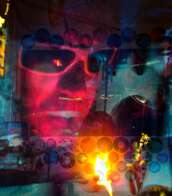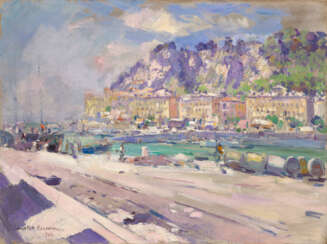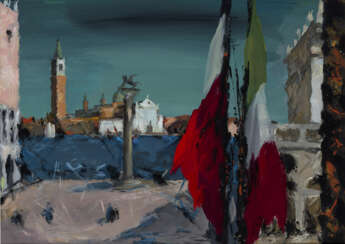art russe important

Zinaida Yevgenyevna Serebriakova (Russian: Зинаида Евгеньевна Серебрякова) was a Russian painter known for her lifelike portraits and depictions of rural life, which resonate with warmth and a profound sense of humanity. Born into the distinguished Benois family in 1884, her early life was immersed in art, guided by notable figures like her grandfather, Alexandre Benois, and influenced by her study trips to Italy and under the mentorship of Ilya Repin and Osip Braz. Her marriage to Boris Serebriakov further enriched her artistic environment, enabling her to produce works that captured the simple joys and the intrinsic beauty of her surroundings.
Serebriakova's art gained significant attention with her self-portrait "At the Dressing-Table" (1909) and continued with notable works like "Peasants" (1914–1915) and "Bleaching Cloth" (1917), highlighting her exceptional skill in portraying the Russian countryside and its inhabitants with a blend of grandeur and intimacy. Her ability to imbue her canvases with the spirit of her subjects, whether through the dignified depictions of peasant life or the intimate portrayals of her family, set her apart in the Russian art scene of the early 20th century.
The October Revolution of 1917 marked a turning point in Serebriakova's life, leading to personal tragedies and a shift in her artistic medium due to financial constraints. Despite these challenges, her resilience and dedication to art remained steadfast, evident in her works from this period that include poignant family portraits and explorations of new subjects in the realm of theatre and ballet.
In 1924, Serebriakova moved to Paris, where her art evolved through influences from travels, notably her trips to Morocco, capturing the vibrancy of landscapes and local cultures. Yet, the essence of her work—characterized by a celebration of beauty and life—remained consistent throughout her career. Although separated from her homeland for many years, the recognition of her art in the Soviet Union before her death in 1967 affirmed her lasting impact on Russian and French art.
Zinaida Serebriakova's legacy is a testament to her indomitable spirit and artistic prowess, making her one of the most cherished painters of her time. Her works continue to be celebrated for their technical brilliance, emotional depth, and the unique perspective she offered on the beauty of everyday life.
For collectors and experts in art and antiques, Serebriakova's works offer a window into the soul of early 20th-century Russia and France, embodying the universal themes of family, work, and the natural world with unparalleled sensitivity and grace. To stay updated on sales and auction events featuring Zinaida Yevgenyevna Serebriakova's works, signing up for updates is a step toward owning a piece of this exceptional artistic legacy.


David Davidovich Burliuk (Russian: Давид Давидович Бурлюк), a pioneering figure of the Russian Futurist movement, was a Ukrainian poet, artist, and publicist, born in 1882 in Semirotovshchina, Kharkov, Ukraine, and died in 1967 on Long Island, N.Y., U.S. Known for his eclectic contributions that spanned poetry, painting, criticism, and publishing, Burliuk's work was instrumental in introducing the Russian avant-garde to Europe and the United States. Despite having a lesser volume of work in poetry and painting compared to his contemporaries, Burliuk's knack for discovering talent and promoting it was unparalleled. He was among the first to publish the works of Velimir Khlebnikov and to recognize the genius of Vladimir Mayakovsky, significantly contributing to their renown.
Burliuk's artistic journey was marked by his involvement with the Futurist and Neo-Primitivist movements. His early work, including an exhibition with the group Zveno ("The Link") in Kiev in 1908 and his participation in the Hylaea group, set the stage for his later achievements. He was a co-author of the influential Futurist manifesto "A Slap in the Face of Public Taste" in 1912, advocating for a break from traditional art forms and the embrace of modernity. Burliuk's commitment to Futurism was evident in his publishing endeavors and his collaborations with notable artists of the time.
In his later years, after emigrating to the United States in 1922, Burliuk continued to engage with the art world, contributing to pro-Soviet groups and publishing his works and those of his contemporaries. His efforts were recognized in several exhibitions, including a significant show at the Brooklyn Museum's 1926 International Exhibition of Modern Art. Despite facing challenges, such as being denied permission to visit his homeland by the Soviet government, Burliuk's influence remained steadfast. His legacy as a central figure in Russian Futurism and his contributions to the broader art movement are celebrated to this day.
To stay informed about updates and events related to David Davidovich Burliuk, including sales of his works and auction events, sign up for our newsletter. This subscription will ensure you're the first to know about new discoveries and opportunities to engage with Burliuk's enduring legacy.


Pavel Petrovich Sokolov-Skala (Russian: Павел Петрович Соколов-Скаля) was a prominent Russian artist, celebrated for his contributions to Soviet art and culture. Born in 1899, Sokolov-Skala's artistic journey was marked by his affiliation with the Communist Party of the Soviet Union, reflecting the political landscape of his time through his work. His legacy includes receiving prestigious awards like the Stalin Prize and the Medal "For Valiant Labour in the Great Patriotic War 1941–1945", acknowledging his influence and contribution to Russian art and history.
Sokolov-Skala's oeuvre is notable for its diversity, ranging from monumental historical paintings to poignant war posters, demonstrating his versatility and mastery across different mediums. His works, such as "The Clear Glade" and "A Heroic Deed of Captain Gastello," are celebrated for their powerful portrayal of Soviet themes, capturing the spirit and challenges of his era. These pieces not only underscore Sokolov-Skala's artistic prowess but also his commitment to depicting the Soviet Union's ideals and narratives.
His paintings and posters, often characterized by their bold use of color and dramatic compositions, provide insight into the socio-political context of the 20th century Soviet Union, making him a key figure in Russian art history. Despite his significant role, Sokolov-Skala's work invites audiences to explore the nuanced intersections of art, politics, and history, offering a complex portrait of Soviet life.
Collectors and experts in art and antiques have continuously shown interest in Sokolov-Skala's works, highlighting their historical value and artistic merit. His contributions remain a focal point of study and appreciation within both Russian and international art circles.
For enthusiasts looking to delve deeper into the world of Pavel Petrovich Sokolov-Skala or to add a piece of his legacy to their collection, signing up for updates can provide exclusive access to new product sales and auction events featuring his work. This is a unique opportunity to engage with the rich history and profound impact of Sokolov-Skala's art on contemporary culture.


Nikolai Ivanovich Andronov (Russian: Николай Иванович Андронов) was a Soviet artist of the second half of the twentieth century. He is known as a painter, muralist and teacher, considered one of the founders of the "severe style" in the art of the USSR.
Nikolai Andronov actively worked to liberalize the Soviet art scene. At the beginning of his career, he created thematic paintings, later focusing on landscapes. The artist was also involved in the decoration of buildings, including the clubhouse of the Soviet Embassy in the United States, the Paveletsky Railway Station and subway stations in Moscow. From 1992, he taught at the Surikov Moscow Art Institute and headed the composition department.


Pavel Vitalievich Pepperstein (birth name Pivovarov) is a Russian writer, artist, contemporary art theorist and one of the founders of the art group Inspection Medical Hermeneutics.

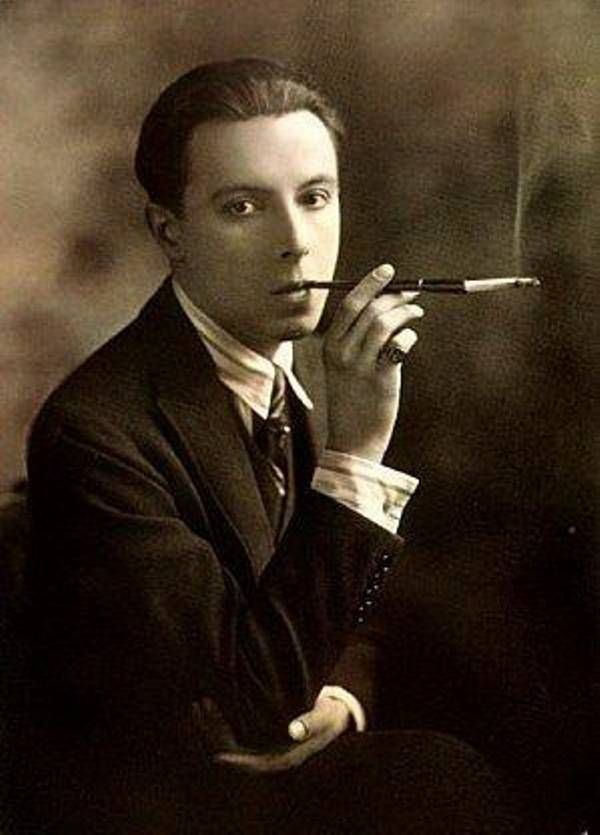
Roman Petrovich Tirtoff, pseudonym Erté, was a Russian-born artist, graphic artist, illustrator, stage designer, fashion designer and sculptor of the Art Deco era who worked in Paris and Hollywood. His pseudonym, which he took "so as not to disgrace his family", was made up of the first letters of his first and last name.
Herthe is best known for his elegant fashion illustrations, costume designs and set designs for the theatre.
Erte's work was not limited to the realm of fashion and theatre. He created jewellery, perfume bottles, furniture and furnishings, infusing them with his unique sense of style and elegance. His work often utilised elements of Egyptian, Byzantine and Oriental art, combining historical traditions with contemporary aesthetics


Roman Petrovich Tirtoff, pseudonym Erté, was a Russian-born artist, graphic artist, illustrator, stage designer, fashion designer and sculptor of the Art Deco era who worked in Paris and Hollywood. His pseudonym, which he took "so as not to disgrace his family", was made up of the first letters of his first and last name.
Herthe is best known for his elegant fashion illustrations, costume designs and set designs for the theatre.
Erte's work was not limited to the realm of fashion and theatre. He created jewellery, perfume bottles, furniture and furnishings, infusing them with his unique sense of style and elegance. His work often utilised elements of Egyptian, Byzantine and Oriental art, combining historical traditions with contemporary aesthetics


Roman Petrovich Tirtoff, pseudonym Erté, was a Russian-born artist, graphic artist, illustrator, stage designer, fashion designer and sculptor of the Art Deco era who worked in Paris and Hollywood. His pseudonym, which he took "so as not to disgrace his family", was made up of the first letters of his first and last name.
Herthe is best known for his elegant fashion illustrations, costume designs and set designs for the theatre.
Erte's work was not limited to the realm of fashion and theatre. He created jewellery, perfume bottles, furniture and furnishings, infusing them with his unique sense of style and elegance. His work often utilised elements of Egyptian, Byzantine and Oriental art, combining historical traditions with contemporary aesthetics


Roman Petrovich Tirtoff, pseudonym Erté, was a Russian-born artist, graphic artist, illustrator, stage designer, fashion designer and sculptor of the Art Deco era who worked in Paris and Hollywood. His pseudonym, which he took "so as not to disgrace his family", was made up of the first letters of his first and last name.
Herthe is best known for his elegant fashion illustrations, costume designs and set designs for the theatre.
Erte's work was not limited to the realm of fashion and theatre. He created jewellery, perfume bottles, furniture and furnishings, infusing them with his unique sense of style and elegance. His work often utilised elements of Egyptian, Byzantine and Oriental art, combining historical traditions with contemporary aesthetics


Roman Petrovich Tirtoff, pseudonym Erté, was a Russian-born artist, graphic artist, illustrator, stage designer, fashion designer and sculptor of the Art Deco era who worked in Paris and Hollywood. His pseudonym, which he took "so as not to disgrace his family", was made up of the first letters of his first and last name.
Herthe is best known for his elegant fashion illustrations, costume designs and set designs for the theatre.
Erte's work was not limited to the realm of fashion and theatre. He created jewellery, perfume bottles, furniture and furnishings, infusing them with his unique sense of style and elegance. His work often utilised elements of Egyptian, Byzantine and Oriental art, combining historical traditions with contemporary aesthetics


Bartolomé Esteban Murillo was a Spanish painter, renowned for his contributions to the world of art and culture. Born in Seville, Spain, in the 17th century, Murillo specialized in religious and genre painting, leaving a lasting impact on the art world.
Murillo is known for his remarkable ability to infuse his paintings with deep emotion and realism. His works often depicted scenes from everyday life, as well as religious subjects. One of his notable specialties was his exceptional skill in capturing the innocence of children in his artwork. His use of soft colors and delicate brushwork gave his paintings a unique and timeless quality.
One of Murillo's most famous works is the series of paintings known as the "Immaculate Conception." These paintings, which depict the Virgin Mary as a young girl, have been praised for their beauty and devotion. Many of his works are housed in museums and galleries around the world, attracting art enthusiasts and collectors.
For collectors and art experts, Murillo's works hold a special place in the art world, with their ability to evoke powerful emotions and capture the essence of the human experience. To stay updated on the latest news and events related to Bartolomé Esteban Murillo's paintings and exhibitions, consider subscribing to our newsletter. We'll keep you informed about new product sales and auction events featuring this exceptional artist's works. Join us in celebrating the legacy of Bartolomé Esteban Murillo and his invaluable contributions to the world of art.

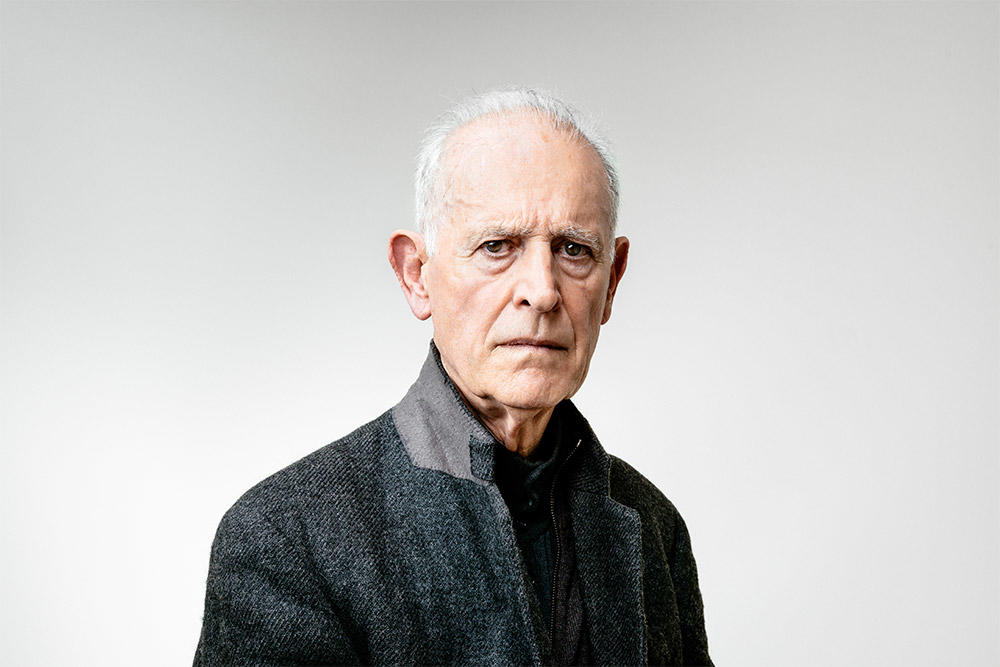
Martial Raysse is a French artist and actor. He lives in Issigeac, France. He holds the record for the most expensive work sold by a living French artist.


Nicolas Party is a Swiss visual artist living and working in New York City and Brussels, Belgium. He is known for his multi-media interdisciplinary immersive exhibitions.


Harold Ancart is a Belgian painter and sculptor. He currently lives and works in New York City.


Nicolas Party is a Swiss visual artist living and working in New York City and Brussels, Belgium. He is known for his multi-media interdisciplinary immersive exhibitions.


Bram Bogart was a Belgian expressionist painter most closely associated with the COBRA group.

